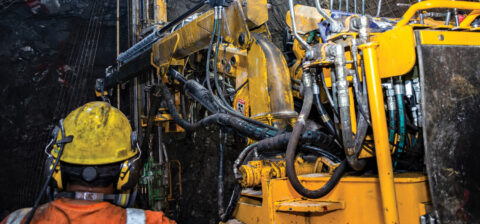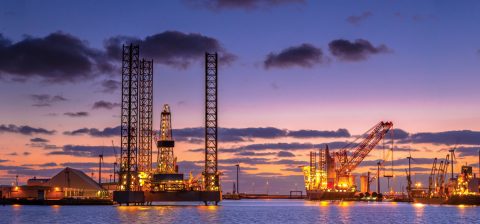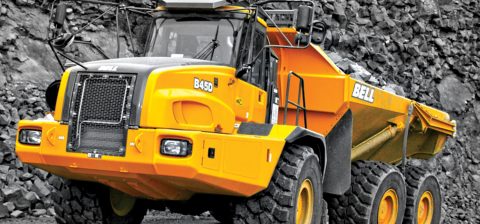SA Mining
Steel’s Global Growth
Strong global economic growth continues to positively affect the steel industry, which has subsequently seen robust demand of some 2% in 2018, explains Ernst & Young (EY) Global Steel leader Paul Mitchell. Earlier in the year, the International Monetary Fund projected global growth of 3.9% in 2018 and 2019, up from 3.7% in 2017.
The positive performance from the steel sector is based on increased infrastructure spend by a number of nations, including refurbishment of aging infrastructure from developed economies, such as the US and Europe, and the roll-out of new infrastructure developments from emerging markets owing to rapid urbanisation, he states.
Trends influencing the steel sector: Trade war conundrum
The positive growth of the global steel industry is good news, given that the trade war between the US and China is creating uncertainty among steel-producing nations whose products, such as those from Turkey, are earmarked for the US market.
Mitchell likens the importance of the resources sector in Africa to that of the steel industry in the US.
“As mining is an important industry in destinations such as South Africa, Australia and the rest of Africa (where it operates on a large scale, is highly politicised and highly unionised), in the US the steel industry holds great importance and is leveraged for political gains,” explains EY’s Wickus Botha.
Given that these primary industries are important for the local economy, political thrust and job creation, countries such as the US and India work to protect the local industries by imposing hefty import tariffs.
“It is difficult to establish, at this point, whether the trade tensions are due to intended political measures or genuine economic policy. The Trump administration has indicated that the tariffs are to protect jobs and the steel industry,” notes Mitchell.
According to Botha, although US economic growth is pegged at over 4% per annum, it remains on the back foot with regard to infrastructure spend.
“Financial constraints have stymied infrastructure investment in the past. Therefore, going forward the US remains focused on tackling its infrastructure backlog. This will require massive quantities of steel and if the steel is produced locally, it would do much to invigorate the local job market and be aligned with the Trump administration’s call to make America better.”
However, any significant change in legislation from the US will only come into play post the US elections in November, Mitchell explains.
China tackles pollution challenge
Apart from trade tensions, the world’s largest steel consumer has been driving its “anti-pollution agenda aimed at reducing its pollution levels”. This has seen the Asian giant remove around 150mtpa of lower-grade steel production from the equation.
“This initiative has taken lower-level steel production out of the market, and this has subsequently improved the quality of the steel produced by Chinese steel mills,” notes Mitchell.
The move has been good for South African producers of high-grade iron ore as it has seen the largest steel consumer import high-grade iron ore from local producer Kumba Iron Ore (KIO).
In fact, two-thirds of product from KIO’s Sishen mine in the Northern Cape is delivered to the Chinese market. The mine’s iron ore reserves are all of high-quality hematite, producing both high-quality lump (64.0%Fe) and high-grade sinter fines (63.5%Fe), KIO states on its website.
According to Botha, South Africa should, from a policy perspective, therefore focus its efforts on delivering niche-market products instead of replicating what already exists in the market.
“South Africa should look to follow in the footsteps of Australia which has focused on producing high-value niche-market iron ore which has led to producers posting record profits,” adds Mitchell.
South Africa’s steel industry
Steel making, explains Botha, essentially refers to the production of flat-rolled low carbon steel used by the construction sector in the delivery of large-scale infrastructure projects.
In South Africa, ArcelorMittal is the largest producer of flat steel, however over the past five years the company has faced challenging market conditions. The steel producer posted better results recently and released improved volumes of around 4%.
But the stagnant economy, which is growing at less than 1% per annum, is over-indebted and “after the country’s massive social spend, there is little money left for investment on large-scale capital projects”.
“In fact the construction sector – the largest consumer of steel – is currently under tremendous pressure with little expectation of little hope of growth even after the 2019 elections. Given that it takes years to kick-start capital projects, there is little hope that the construction sector will improve over the next few years. However, the motor vehicle and component manufacturing sectors are expected to track better performance than that of the construction sector,” explains Botha.







 Sign-up and receive the Business Media MAGS newsletter OR SA Mining newsletter straight to your inbox.
Sign-up and receive the Business Media MAGS newsletter OR SA Mining newsletter straight to your inbox.